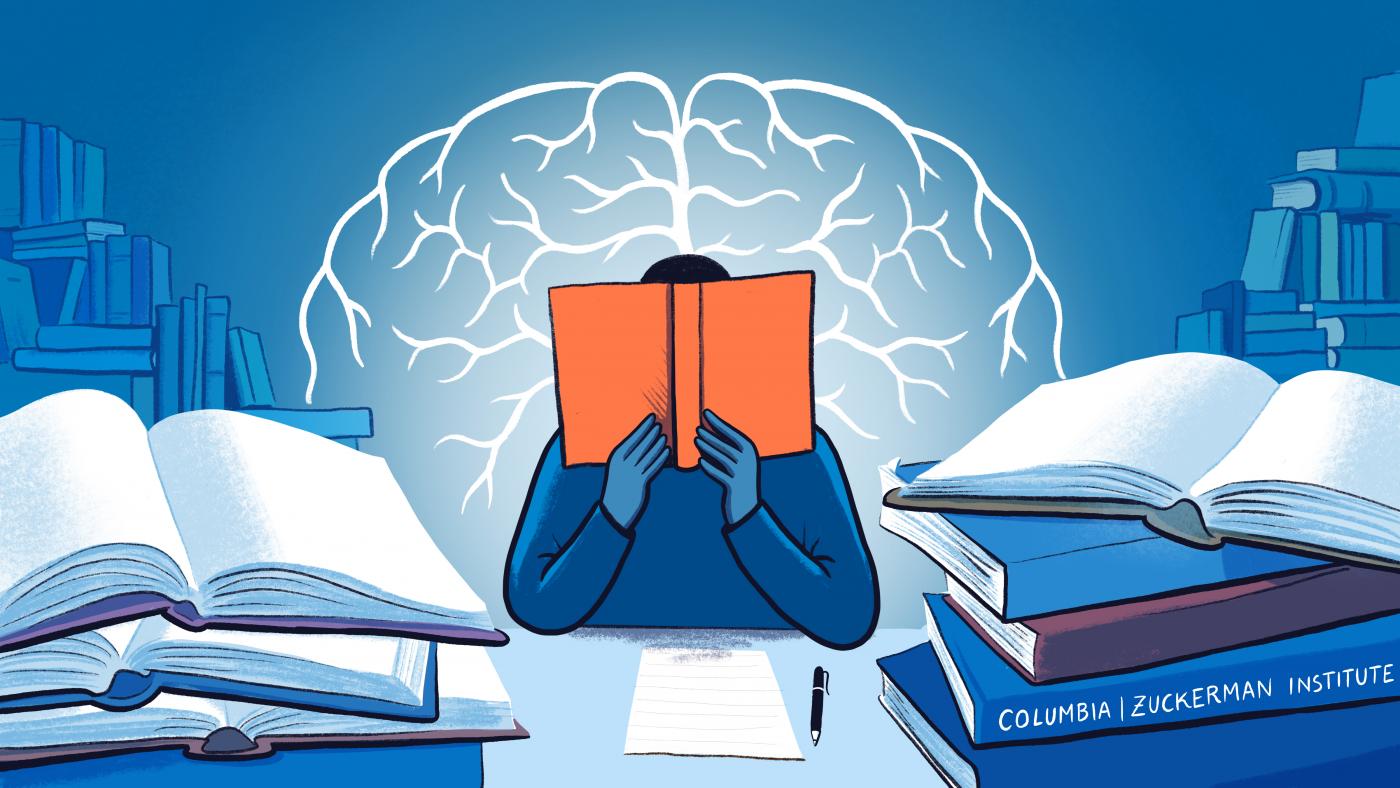When novelist Nicole Krauss hosted a writing workshop at Columbia’s Zuckerman Institute, young neuroscientists came prepared with story ideas. One researcher wanted to explore the brain of a new mother. Another had a question in mind: What if someone lost their memories but retained expertise in one skill? A third brought an opening line: “You appeared, and I was torn by the thought of whether to stay or go.”
“Half of the stories that were eventually written had to do with fly genetics and the other half with scenes in bars,” said Krauss. “We really enjoyed each other’s company, and the fact that we were coming from different disciplines provided a depth of exchange and connection that was really special.”
As the Institute’s inaugural Writer in Residence, Krauss spent much of last year collaborating with her faculty host, Daphna Shohamy, PhD, to connect with scientists and create bespoke events for the community.
“As a writer, Nicole explores many of those same mysteries we are trying to understand from a neurobiological perspective: memory, identity, movement, the complex dynamic between our inner thoughts and the world around us,” said Dr. Shohamy. “Bringing her razor-sharp intellect and boundless curiosity to the Institute, her probing search for understanding has challenged us to rethink and reframe the questions we ask about the workings of the mind.”
Krauss has sat down with researchers to learn about bird songs and computational neuroscience. She’s joined public discussions and arranged a reading from her novel Forest Dark, as well as a talk about her newest release, To Be a Man.
These events drew crowds of researchers, particularly younger scientists, and had a particularly powerful impact on one audience member: Alan Kanzer, a Columbia College alumnus and Zuckerman Institute Brain Trust member who tuned in for one of Krauss’ book clubs. Inspired by the interdisciplinary discussions taking place, Kanzer has contributed $1 million to endow and continue the program, which will now be named the Alan Kanzer Writer in Residence.
“My love of literature is one of the key reasons I went to Columbia,” said Kanzer, senior counsel at Alston & Bird LLP. “So I was very pleased to see the genuine exchanges of ideas taking place between a writer and the scientists of Columbia’s Zuckerman Institute.”
As an undergrad at Columbia College in the 1960s, Kanzer was struck by an essay, authored by British intellectual C.P. Snow, called "The Two Cultures." It argued that a rift had emerged between the arts and the sciences, to the detriment of both. Kanzer, who went on to study law at Yale, would come to experience firsthand the value of bringing together these disciplines, while representing an engineering firm and working on other cases that brought him closer to science.
“I found I was using science in my legal work, and I began to develop an appreciation for how a first-rate scientist examines the issues at stake in solving a problem,” said Kanzer.
I believe that scientists have a good deal to learn from the way that artists look at things
Kanzer believes that dialogue between artists and scientists can stimulate new ideas in both directions. He recalls a workshop held as part of the Narrative Medicine program at the Vagelos College of Physicians and Surgeons, which invited visual artists to work with medical students.
“An artist gives an insight into not just a work of art but into close examination of things: of people and objects,” said Kanzer.
He began to look for ways to build bridges between the humanities and the sciences and bring them into dialogue with one another at the Zuckerman Institute: to remedy the issue highlighted by C.P. Snow, which had stayed with him over the years. After discovering a wellspring of enthusiasm for the arts at the Institute, he established the Alan Kanzer Artist-in-Residence program in 2018. This partnership between Columbia's Zuckerman Institute and School of the Arts enables visual artists to collaborate with scientists studying the brain, the senses, perception, learning and memory.
“I believe that scientists have a good deal to learn from the way that artists look at things,” said Kanzer. “The enthusiasm that I have observed for lectures and discussions with artists and writers from the neuroscientists, especially from the younger neuroscientists, has certainly confirmed my view.”
2019 brought Sarah Sze, a Columbia professor of visual arts known for her sculptures and installations, to the Institute. She was followed last year by celebrated painter Julie Mehretu.
The Alan Kanzer Writer-in-Residence program continues and expands the conversations between the humanities and the sciences at the Institute: inviting not only scientists and writers to participate, but the larger community of Manhattanville and Harlem.
“The Zuckerman Institute was founded on the principle that knowledge about the mind and the brain can inform all human endeavors, from economics to the arts,” said Zuckerman director and CEO Rui Costa, DVM, PhD. “Artists and writers are a natural fit here: We create because we have a brain.”
